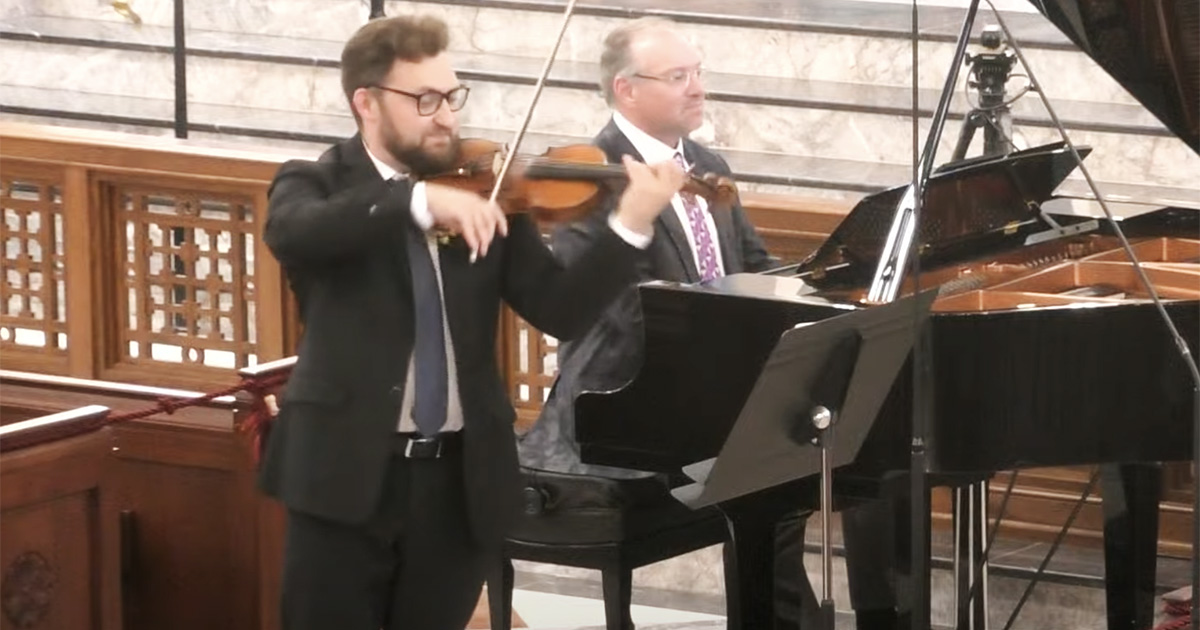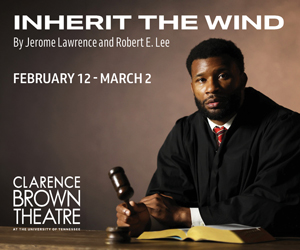Every once in a while, one hears a performance in which the connection between performers and composer is in perfect unity. Such was the case when violinist William Shaub and pianist Kevin Class took on the complex and challenging Sonata for Violin and Piano by Richard Strauss in Sunday’s Cathedral Concert Series at Cathedral of the Most Sacred Heart of Jesus in Knoxville. Strauss was a musical wizard, seemingly able to evoke the innocence of young love, the depravity of unbridled lust, the desire for the heroic, and the longing for eternity – all of which were beautifully captured in this performance by both Shaub and Class.
In Strauss, Shaub seems to have found his musical soulmate. The sonata is not just difficult technically; it is difficult structurally. The violinist is asked to be both star and background. He is required to perform technical challenges of the highest order, and then play off-beats. Shaub met every musical and technical obstacle with a devil-may-care flair, showing a true and deep understanding of the score. He clearly appreciates Strauss’ operatic grounding and reveled in the luscious lines that sounded so obviously written with a voice, not a violin, in mind.

As Shaub soared, Class shimmered. Class was every bit the committed partner, matching Shaub’s technical facility at each elaborate turn. There were moments where Class sounded like a full orchestra, and it was hard to believe there were only two hands at the keyboard. Then there were moments when his playing was almost translucent, and one was reminded of the spellbinding celeste in Der Rosenkavalier. The overall sound was so much greater than a typical sonata. In fact, it seems almost ludicrous to call it a “sonata” when the work is as grand as any concerto ever written.
If this had a been a normal concert, one would discuss each piece and dissect the performances. But this was no normal concert. This evening was all about Strauss and once the piece began everything else on the program was then viewed through the rearview mirror. That said, the other works were performed in exemplary fashion by Shaub and Class. Here are a few highlights.
The slow movement of J.S. Bach’s Sonata for Violin and Harpsichord in C Minor (BWV 1017) was heartbreaking, in the best sense of the word, with Class providing a steady and almost joyous undercurrent of movement against the subtle give-and-take of Shaub’s glorious solo line. It would have been easy for Class to move with Shaub’s slight inflections, and it would have been a mistake.
Shaub’s take on Camille Saint-Saens’ virtuosic Introduction and Rondo Capriccioso (Op. 28) brought the audience to its feet, just 20 minutes into the concert. His triple-stop chords at the end were clean, clear, and perfectly in tune – their overtones most likely still ringing in the Cathedral today. Antonín Dvořák’s Sonata for Violin and Piano in E Flat Major (op.18) was a study in simplicity and restraint – a beautiful balance to the showiness of the Saint-Saens and the fireworks of the Strauss.
And so we return to the Strauss. In lesser hands, this is a piece that is not easy to grasp as a listener. But in looking at the audience, people seemed nothing short of mesmerized. And it was Shaub casting the spell.
Here in Knoxville, we know Shaub first and foremost as Concertmaster of the Knoxville Symphony – a job that requires not only learning repertoire for dozens of orchestral concerts and subsequently providing leadership to the orchestra, but he must also keep his solo chops in top condition. Those of us who attend his Concertmaster Series know he is a formidable chamber musician and a sensitive collaborator. This concert, however, revealed yet another side of Shaub. He showed us what he can do when he’s truly in charge musically, outside the confines of an orchestra or chamber group. It was a sight to behold.






